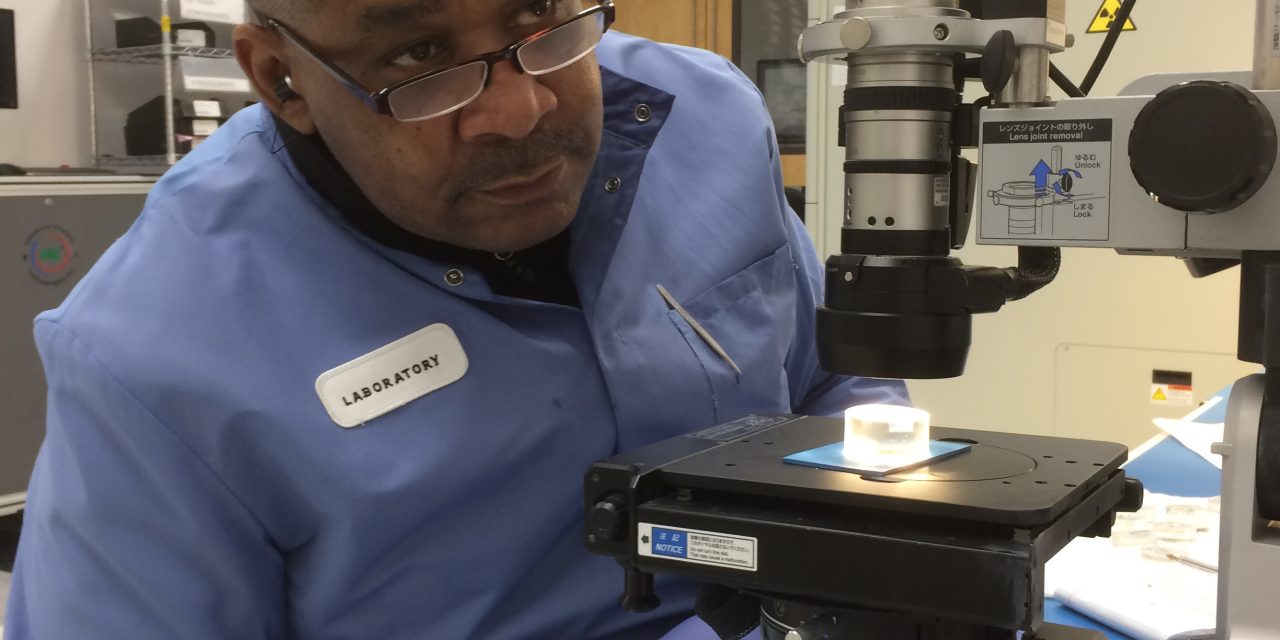Using an SAE AS6171 Registered Testing Laboratory For Risk Mitigation

By Mark Northrup, IEC Electronics
EMSNOW Columnist
The number of suspect counterfeit electronic component incidents is increasing dramatically, with the globalization of the aerospace industry and the resulting complexity of both regional and national supply chain requirements. Assuring the quality and integration of products purchased from suppliers throughout the world, and at all levels within the supply chain, has become a major challenge. The SAE G19 Electronics Standards are completed for counterfeit detection, and companies must learn about these standards and incorporate them into their QMS.
In 2009 the first standard was completed and aimed at mitigating the risks involved with receiving and installing suspect counterfeit electronic parts. The SAE AS5553 Standard – “Counterfeit Electronic Parts; Avoidance, Detection, Mitigation, and Disposition,” standardizes the requirements, practices, and methods related to parts management, supplier management, procurement, inspection, test/evaluation, and response strategies when suspected or confirmed counterfeit parts are discovered. OEMs that are concerned with, or are required to mitigate the risk of suspect counterfeit electronics components, can adopt and become certified to SAE AS5553. This certification will guide them on methods to avoid and detect suspect counterfeit electronics components.
 The SAE AS6081 Standard – “Fraudulent/Counterfeit Electronic Parts: Avoidance, Detection, Mitigation, and Disposition – Distributors,“ was completed in 2012 for independent distributors to comply with SAE AS5553 manufacturer’s requirements. Lori LeRoy, principal at Global IC Trading Group Inc. (AS6081 compliant) shared her thoughts on the pending updated new release. “Until the final release, I can only speculate on the requirements of the published document. However, if AS6081-A will require ISO 17025 accreditation for the various required tests, it will force independent distributors that have already made the investment in equipment and training to either obtain ISO 17025 accreditation for EACH required test, or to partner with a Test Facility with ISO 17025 accreditation, such as IEC Electronics Analysis and Testing Laboratory, to perform the required tests on their behalf.” Currently Global IC Trading is ISO 9001, AS9120, ANSI /ESD S20.20, CCAP Certified and a DLA QTSL.
The SAE AS6081 Standard – “Fraudulent/Counterfeit Electronic Parts: Avoidance, Detection, Mitigation, and Disposition – Distributors,“ was completed in 2012 for independent distributors to comply with SAE AS5553 manufacturer’s requirements. Lori LeRoy, principal at Global IC Trading Group Inc. (AS6081 compliant) shared her thoughts on the pending updated new release. “Until the final release, I can only speculate on the requirements of the published document. However, if AS6081-A will require ISO 17025 accreditation for the various required tests, it will force independent distributors that have already made the investment in equipment and training to either obtain ISO 17025 accreditation for EACH required test, or to partner with a Test Facility with ISO 17025 accreditation, such as IEC Electronics Analysis and Testing Laboratory, to perform the required tests on their behalf.” Currently Global IC Trading is ISO 9001, AS9120, ANSI /ESD S20.20, CCAP Certified and a DLA QTSL.
 On October 2016, the G19 Committee completed the SAE AS6171 Standard – “Test Methods Standard; General Requirements, Suspect/Counterfeit, Electrical, Electronic, and Electromechanical Parts” for Registered Testing Laboratories (RTL). The SAE AS6171 provides the detailed risk evaluation instructions, as well as more detailed instructions on how to test suspect counterfeit electronic components. The ISO/IEC 17025 standard is used for accrediting test facilities, such as those performing the tests prescribed in SAE AS6171. “An accreditation confirms that the test laboratory and their staff have the proper equipment and training to be able to perform specific tests”, stated Roger Muse VP of Business Development ANAB. The ANSI-ASQ National Accreditation Board (ANAB) is the largest accreditation body in the United States.
On October 2016, the G19 Committee completed the SAE AS6171 Standard – “Test Methods Standard; General Requirements, Suspect/Counterfeit, Electrical, Electronic, and Electromechanical Parts” for Registered Testing Laboratories (RTL). The SAE AS6171 provides the detailed risk evaluation instructions, as well as more detailed instructions on how to test suspect counterfeit electronic components. The ISO/IEC 17025 standard is used for accrediting test facilities, such as those performing the tests prescribed in SAE AS6171. “An accreditation confirms that the test laboratory and their staff have the proper equipment and training to be able to perform specific tests”, stated Roger Muse VP of Business Development ANAB. The ANSI-ASQ National Accreditation Board (ANAB) is the largest accreditation body in the United States.
Doing the cost analysis
Balancing the costs associated with certifications and accreditations along with the requirements of customers and government contractors is an industry challenge still today. The recent October 2016 publication Source of Electronic Parts – DFAR 252.246.7008 states, “Contractor-approved supplier (CAS) means a supplier that does not have a contractual agreement with the original component manufacturer for a transaction, but has been identified as trustworthy by a contractor or subcontractor.” The term ‘trusted supplier’ was introduced in 2012 NDAA, Section 818 on April 10, 2012 and the industry was optimistic that a clear definition and requirement flow down would be established to become a trusted supplier.
Five years later there is still no clear definition of trusted supplier or trustworthy, and no clear pathway to become a trusted supplier. Today there are so many more standards, certifications and accreditations to consider, making it more challenging to understand what is actually needed and necessary. The goal for all of us is to reduce the risk of counterfeit product entering the supply chain. Certifications, accreditations and a solid education in counterfeit prevention will reduce this risk, but will not eliminate it. This is not a game; people’s lives are at stake.
IEC Electronics Corp. (NYSE American: IEC) announced its IEC Electronics Analysis and Testing Laboratory (IATL) in Albuquerque, NM has once again received an ISO/IEC 17025:2005 accreditation from the ANSI-ASQ National Accreditation Board (ANAB). The scope of the accreditation includes several SAE AS6171 test methods for suspect/counterfeit, electrical, electronic and electromechanical (EEE) parts. As of this print IEC Electronics is the first and only Electronic Manufacturing Services (EMS) provider with an on-site testing laboratory (IATL) to receive this accreditation with the addition of SAE AS6171 Test Methods.












